Major element analysis
Type of resources
Available actions
Topics
Keywords
Contact for the resource
Provided by
Years
Formats
Representation types
Update frequencies
Scale
-

Analyses of major elements (presented as weight percent oxide) in volcanic rocks from Mt. St. Helens, Washington, USA. The data table includes sample descriptions. More detailed sample descriptions are given in Blundy et al., (2008). Blundy, J., Cashman, K.V. and Berlo, K. (2008) Evolving magma storage conditions beneath Mount St. Helens inferred from chemical variations in melt inclusions from the 1980-1986 and current (2004-2006) eruptions, in: Sherrod, D.R., Scott, W.E., Stauffer, P.H. (Eds.), A volcano rekindled: the renewed eruption of Mount St. Helens, 2004-2006, Reston, VA, pp. 755-790.
-
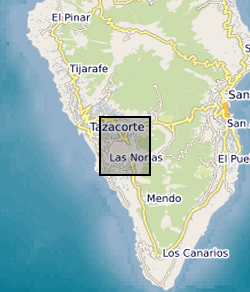
Major and trace element data of lava and tephra samples from the 2021 Tajogaite eruption. Major and select trace element collected by XRF, trace elements collected by ICPMS, both at the University of Granada. Data collected as part of NERC Urgency Grant led by K Chamberlain (Liverpool), in collaboration with M Pankhurst (INVOLCAN), J Scarrow (Granada), D Morgan (Leeds), J Hickey (Exeter), D Neave (Manchester), for understanding how eruptions begin, evolve and end. Samples analysed span the entire September - December 2021 eruptive sequence of Tajogaite, and data were collected between December 2021 and August 2022.
-
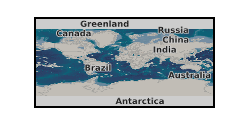
The dataset consists of a spreadsheet containing whole rock geochemistry (Major and trace elements, Hf isotopes) from 7 samples and zircon U-Pb, O, Hf isotope and trace elements compositions (>200 spots on zircons from 7 samples) analysed by Ion Microprobe (NERC EIMF) and MC-LA-ICP-MS (NIGL). The samples are Eoarchaean amphibolite-facies mafic gneisses and a pegmatite as well as granulite-facies mafic gneiss and migmatite (melano- and leucosome) from the Kapuskasing uplift in Ontario, Canada.
-
Fluid pH and major and minor element data from shale-acidic fluid interaction laboratory experiments
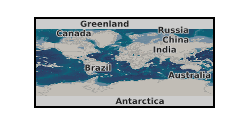
This dataset presents major (ICP-OES) and minor (ICP-MS) element data and fluid pH during interaction of simulated fracturing fluids with the Bowland-Hodder shale at a variety of conditions, i.e. fluid acidity (pH 1-5), temperature (25-70 C), and rock/fluid ratio (from 0.2:200 to 20:200), as well as two end member mineralogical compositions (from 618 m depth and 673 m depth). The data was collected under the SECURe (Subsurface Evaluation of CCS and Unconventional Risks funded under the European Union’s Horizon 2020 research and innovation programme under grant agreement number 764531. Data supplied by permission of University of Nottingham and British Geological Survey.
-
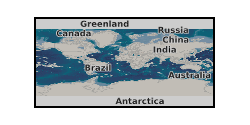
Major and trace element data for partial melts derived from high pressure-temperature experiments on a basaltic starting composition from the Ontong Java Oceanic Plateau.
-

We collected major element, trace element and Nd isotopes of cumulate plagioclase and clinopyroxene in lower crustal gabbros from Hess Deep oceanic crust (~2°15'N, 101°30'W) to investigate the Nd isotopic heterogeneity of melts delivered to a complete section of Hess Deep oceanic crust, accreted at the fast-spreading (133 mm/yr) East Pacific Rise (EPR). These data are presented in Cooper et al. (2025) (https://doi.org/10.1130/G52872.1). Elemental maps of 58 samples were initially obtained prior to selecting a subset of 25 samples for in-situ microanalysis. We targeted the Nd isotope record of cumulate plagioclase and clinopyroxene from lower crustal gabbro samples, representing early crystallisation products of melts delivered to the crust. These samples were collected in several expeditions: Ocean Drilling Program (ODP) Leg 147; RSS James Cook cruise JC21; Integrated Ocean Drilling Program (IODP) Expedition 345 (Site U). Combined, these studies provide the most complete composite section of fast-spreading EPR crust to date (stratigraphic depth of 4350 m to 25 m). In our study, we selected 25 samples for in situ Nd isotope microanalysis, covering the range of mineralogy and textural diversity, and over the full stratigraphic depth. For a comparison to local MORB compositions, we selected a set of 13 upper-crustal sheeted dikes collected on the RSS James Cook cruise JC21. Our data reveal that the mantle is heterogeneous at the scale of melt extraction, and the crystal record from the lower crust shows greater 143Nd/144Nd heterogeneity than the overlying MORB. Hence, Pacific MORBs do not reflect the full heterogeneity of their mantle source, and some aggregation of melts occurs within the crust. Data was collected between 2020 and 2023 by George Cooper, Johan Lissenberg and Max Jansen at Cardiff University, UK, as part of NERC Grant NE/T000317/1:HiDe: A Highly Heterogeneous Depleted Upper Mantle? Mineral isotopic analyses were performed on a Thermo Scientific TRITON Plus at the Vrije Universiteit in Amsterdam. The long-term average and reproducibility (2019–2022) for the JNdi-1 standard is 0.512094 ± 0.000011 2 SD (standard deviation; n = 28) with 1011Ω resistors (used for clinopyroxene) and 0.512105 ± 0.000044 2 SD (n = 45) with four 1013Ω resistors (used for plagioclase). Full methodology can be found within the supplemental Material of Cooper et al. (2025) at https://doi.org/10.1130/GEOL.S.28485770 The DOI is a supplement to https://doi.org/10.1130/G52872.1 Methodology: https://gsapubs.figshare.com/articles/journal_contribution/Supplemental_Material_Crustal_versus_mantle-level_aggregation_of_heterogeneous_melts_at_mid-ocean_ridges/28485770?file=52665137
-
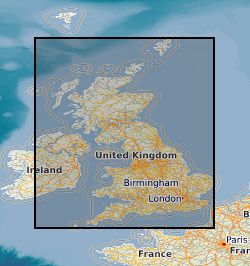
This layer of the map based index (GeoIndex) shows the locations of over 12,500 rock samples from the land area of the United Kingdom gathered as part of the Mineral Reconnaissance Programme (MRP). The Mineral Reconnaissance Programme (MRP), funded by the DTI, carried out baseline mineral exploration in Great Britain between 1972 and 1997. The programme has been subsumed into the new BGS Minerals Programme, also funded by the DTI. The rock samples have been analysed for a variety of major and trace elements, mainly by XRF.
-

Whole rock Hafnium (Hf) isotope data for mid-oceanic ridge basalt (MORB) samples from the Reykjanes ridge, Arctic Ocean, Equatorial MAR, South MAR, SEIR. The Hf isotope results are not yet published but will contribute to the mantle characterisation efforts detailed in Béguelin et al. (2025) (https://doi.org/10.1029/2025GC012357). Mid-Ocean Ridge Basalt (MORB) glasses were crushed and sieved to ~600 µm. Chips were then hand-piked under a binocular microscope to remove alteration (only optically clear chips selected). Hf fractions were purified using the column chemistry protocol of Béguelin et al. (2017) and references therein (https://doi.org/10.1016/j.gca.2017.09.015). Hf isotope ratios were measured on a Nu Instruments Plasma II mass spectrometer equipped with an Aridus desolvating nebuliser, on 50 ppb solutions. Accuracy and precision were monitored with repeated measurements of the JMC-475 standard (reported in dataset). Scanning Electron Microscopy-Energy Dispersive Spectrometry (SEM EDS) and Laser Ablation-Inductively Coupled Plasma-Mass Spectrometry (LA-ICP-MS) major and trace elements maps of eclogites from the Raspas complex (Ecuador). Samples were prepared as 1-inch epoxy mounts. Samples are described in John et al. (2010) (https://doi.org/10.1007/s00410-009-0427-0). The objective of this (present) work is to trace U, Pb and Th fluxes during subduction, as documented by obducted eclogites. Dataset includes SEM mapping of major elements with a Zeiss Sigma HD Field Emission Gun Analytical Scanning Electron Microscope (SEM) using energy dispersive X-ray spectroscopy (EDS). Elements measured are Fe, Ca, Cu, Ni, Mn, K, Na, Al, Mg, Ti, O, Cr, S, Si, P, Zr. Resolution is 25µm. Dataset also includes LA-ICP-MS mapping of trace elements using an Elemental Scientific ESL213 laser coupled to a Thermo Scientific iCap Q mass spectrometer. Elements measured are Rb, Sr, Mo, Cs, La, Yb, Pb, Th, U. Parameters: Raster spacing (resolution): 40µm, scan speed: 80 µm/s, rep rate: 20 Hz, fluence: 4.5 J/cm2, dwell time per element: 50 ms, injector: ESI dual concentric injector (DCI). SEM data are in weight %, LA-ICP-MS data are in µg/g (ppm). Data are unpublished, but further details can be found in the poster included with the dataset. Dataset was produced at the School of Earth and Environmental Sciences, Cardiff University, in the context of NERC grant NE/T012633/1 Mantle Circulation Constrained (MC2): A multidisciplinary 4D Earth framework for understanding mantle upwellings.
-
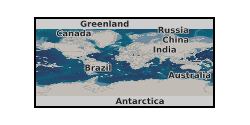
The data comprises a multi-proxy dataset of 49 samples spanning approximately the time interval from 1.8-3.9 Ma according to the currently available shipboard age model from offshore the Limpopo River, southwest Indian Ocean. Data includes major and trace element chemistry and K-Ar ages from the clay fraction (<2um), radiogenic isotope geochemistry, stable isotopes of planktonic foraminifera Globigerinoides ruber. The data set is now online with a citable DOI, although with an embargo till September 2019, http://dx.doi.org/10.1594/IEDA/100719
-

Primary data, model initial conditions, model results, a compiled database of olivine diffusivity experiments and supplementary tables used in the paper: 'Mutch, E. J. F., Maclennan J., Shorttle, O., Edmonds, M. & Rudge, J. F., (2019), Rapid trans-crustal magma movement under Iceland, Nature Geoscience'. Data_S1 contains electron probe microanalysis (EPMA) profile data of olivine crystals used in this study. This file also includes all of the initial conditions for forsterite content (XFo), Ni and Mn used in the diffusion modelling. Standard deviations are averaged values of standard deviations from counting statistics and repeat measurements of secondary standards. Data_S2 is a compiled database of olivine diffusion experiments used to derive multiple linear regressions for diffusion coefficients and associated covariance matrices. Regressions were only made through [001] data. Data_S3 contains median values for all of the inverted parameters estimated for each crystal profile from the Nested Sampling Bayesian inversion for each type of initial condition and model equation. All of the Monte Carlo realisations for each model are also included in this file. Table_S1 is a supplementary table that contains olivine diffusion equation regression parameters derived and used as part of this study. Table_S2 is a supplementary table that contains covariance matrices for olivine diffusion equations derived in this study. Table_S3 is a supplementary table that contains covariance matrices for aSiO2 (silica activity) dependent olivine diffusion equations derived in this study. Table_S4 is a supplementary table that contains angles between the EPMA profile and the main crystallographic axes in olivine as measured by EBSD. These angles are incorporated into the anisotropy calculation used to determine the apparent diffusivity parallel to the measured profile. angle100P, angle010P and angle001P are the angles between the profile and [100], [010] and [001] respectively. Table_S5 is a supplementary table that contains ,median timescales and 1 sigma errors obtained from the posterior distributions of the Nested Sampling Bayesian inversion conducted on each olivine profile. The results using Al-based initial conditions, constant initial conditions (diffusion only), and aSiO2 based equations using Al-based initial conditions are presented here. The classification of each profile (growth-dominated vs. Al-decoupled) is also shown. See paper (Mutch, E. J. F., Maclennan J., Shorttle, O., Edmonds, M. & Rudge, J. F., (2019), Rapid trans-crustal magma movement under Iceland, Nature Geoscience) for more details.
 NERC Data Catalogue Service
NERC Data Catalogue Service